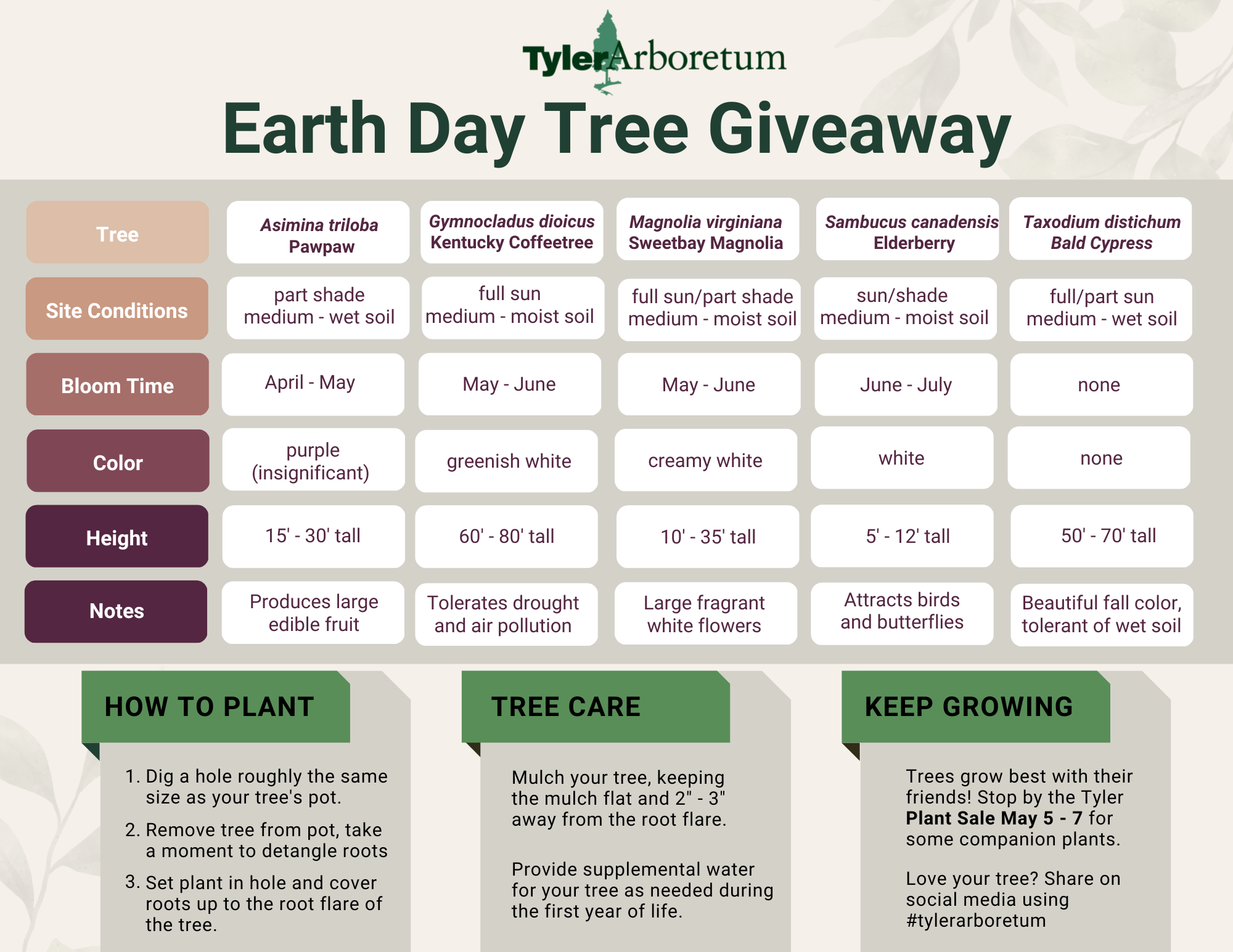Registration Opens April 3rd
The trees we plant now will shelter our communities far into the future. We have focused on this for the Member Tree Giveaway in honor of Earth Day. The tree you receive is a species projected to survive well according to different climate models and will provide food or shelter for Pennsylvania wildlife.
Registration begins on April 3 and continues until all trees are claimed. Not a member? Become one here!
Pick up your FREE tree on Friday, April 14, at the Spirit of Spring Fireside between 5:00 – 7:30 pm.
Here’s How to Get Your Tree:
Step 1 – Register
Registration is required to receive one tree per membership. Registration begins on April 3 and continues until all trees are claimed.
Review the five trees we are offering and select your tree. Please select only one tree out of the five choices available. Make sure that you have the conditions and room for the tree by reading the information provided on the image below.
Step 2 – Pick Up
The pickup location is in Tyler’s parking lot on the night of Spirit of Spring Fireside, April 14 from 5 – 7:30 pm. You must bring your receipt or membership card with the person’s name who reserved the tree.
Staff and volunteers will be available to answer your questions. Please be patient as we anticipate a good turnout.
Step 3 – Plant and Care
Take your tree home to plant – water regularly for the first year. Come back to our Annual Plant Sale on May 5,6, and 7 to buy companion plants for your specific tree. All trees grow better with friends!
Tree Selections & Info
Pawpaw (Asimina triloba) – 25 total – ALL CLAIMED
Kentucky coffeetree (Gymnocladus dioicus) – 25 total – ALL CLAIMED
Sweetbay Magnolia (Magnolia virginiana) – 25 total – ALL CLAIMED
Elderberry (Sambucus canadensis) – 31 total – ALL CLAIMED
Bald cypress (Taxodium distichum) – 5 total – ALL CLAIMED
Pawpaw – Asimina triloba
This is your chance to plant a native fruit tree! If you have a moist area, say next to a stream or in a low spot, even better. Pawpaw is a medium-sized, multi-trunked tree reaching 30 to 40 feet and will spread as a colony to 30 feet wide. For best fruiting, make sure you have two different pawpaws. Flowers attract the Zebra Swallowtail butterfly in April, and when pollinated, fruits appear in September. Pick them quickly before the squirrels do! Fruits taste like ripe bananas and can be cooked with recipes calling for bananas.
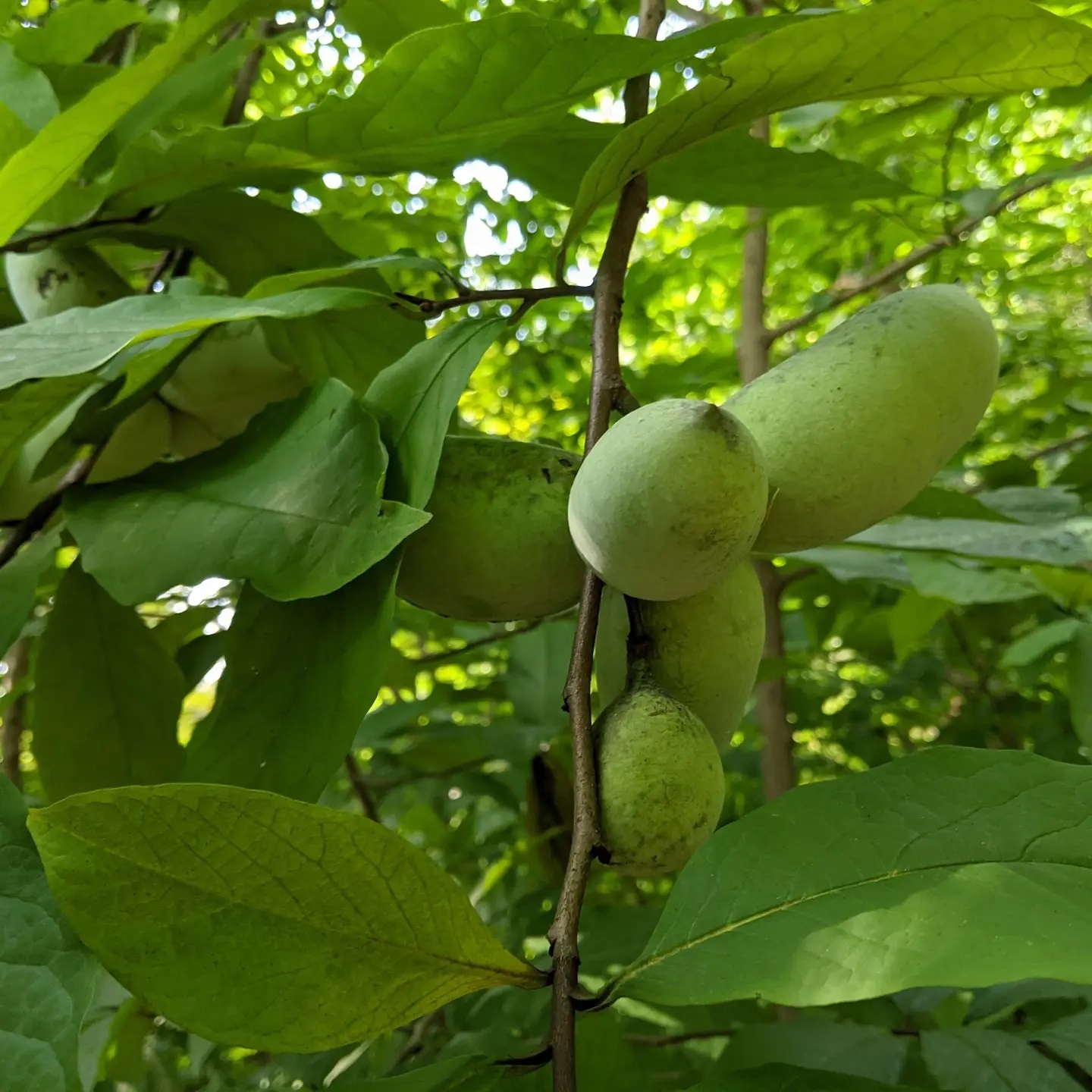
Kentucky coffeetree – Gymnocladus dioicus
Take home a tree that is an iconic part of the Tyler property! Though genetically differant from our state champion Kentucky coffeetree, this beautiful tree is native to the Central and Eastern United States. Small, greenish-white flowers appear in May and June with a pleasant astringent scent. This hardy tree does well in poor soil, tolerates dry or moist conditions, and is unfazed by air pollution. This tree drops its leaves early in the fall and is one of the last trees to leaf out in the spring, however, its coarse bark and twisting branches create great winter interest in the garden. Wondering about the name? Kentucky coffeetree seeds are very toxic right off the tree – but Native Americans and Early American settlers roasted and ground the nuts to brew into a (caffeine-free) coffee-like beverage!
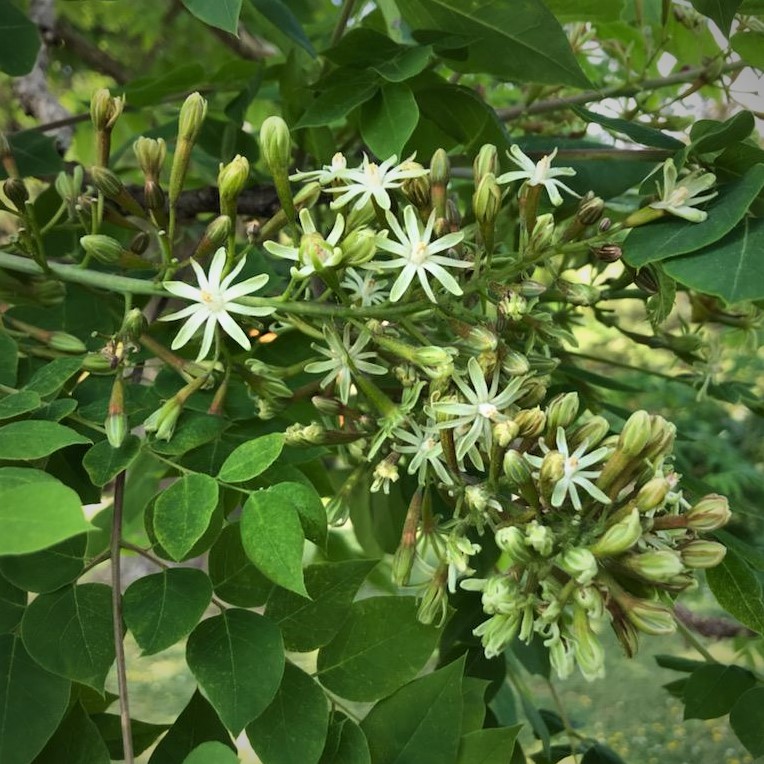
Sweetbay magnolia – Magnolia virginiana
We really can’t say enough good things about sweetbay magnolia. This gorgeous native magnolia grows throughout the Southeastern United States and would make a stunning addition to any home garden. A smaller stature tree, this magnolia can reach up to 60 feet in the south and more typically appears as a 15 – 20 foot multi-stemmed tree in our area. Large, fragrant white blossoms appear from May to June and perfume the garden with a sweet lemony scent that will drift through an open window on a warm early summer breeze. This hardy tree tolerates wet soil, heavy clay and air pollution and is even semi-evergreen in our area.
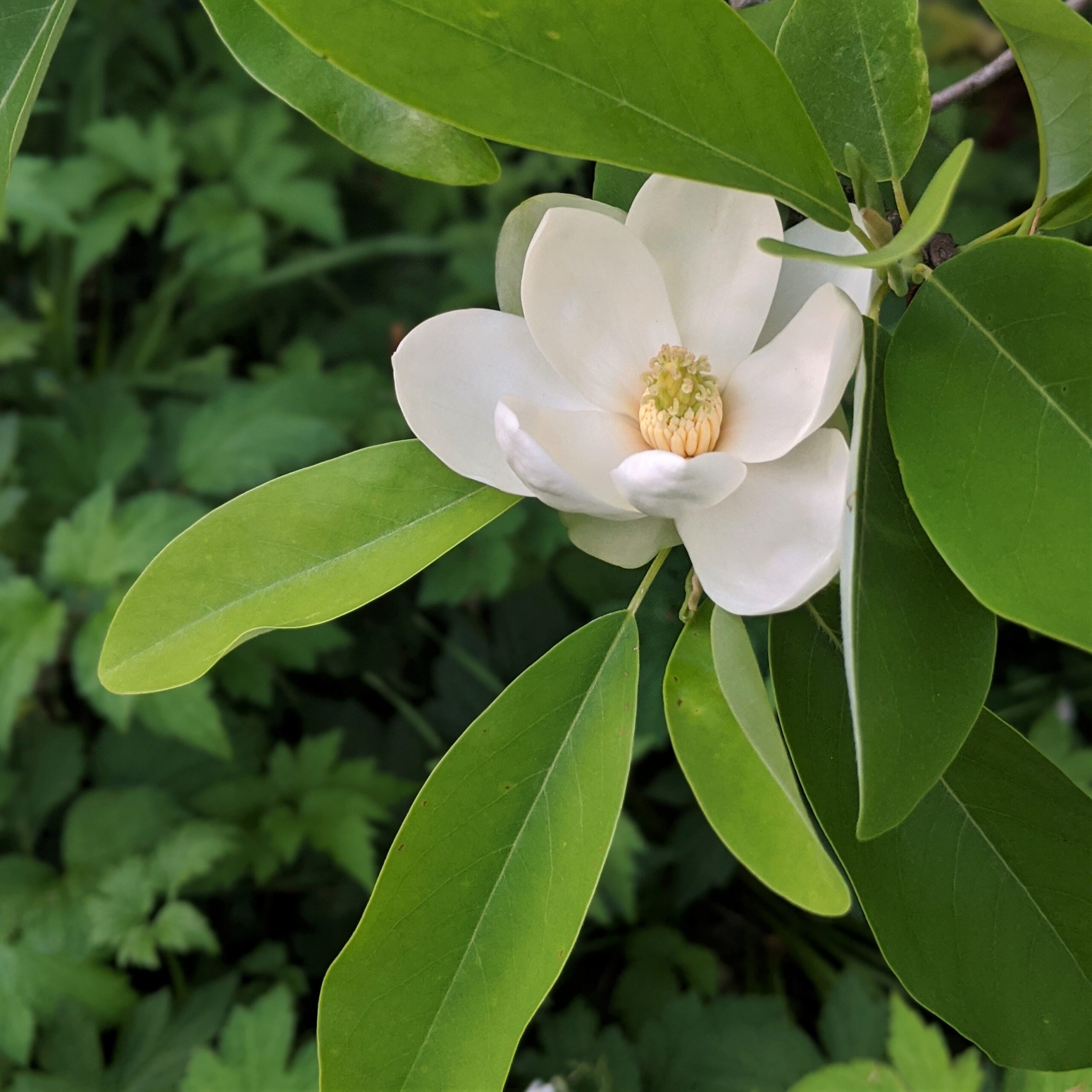
Elderberry Sambucus Canadensis
Yes, this is THAT elderberry! Make your own elderberry syrup right at home before the next cold and flu season. This tough-as-nails native shrub is great for erosion control, tolerates wet, clay soil, and is certain to thrive in your home garden. Large, fragrant white flowers appear in June and July, beckoning butterflies to your backyard. In late summer, the large purple berries (drupes) form that will have birds fluttering around these plants. If you can beat the birds to them, you can brew these berries into elderberry syrup! A very tolerant shrub, elderberry can be cut back in late winter to keep your shrub neat and tidy. This plant is an excellent spreader and will happily naturalize to fill whatever space you give it. Unwanted suckers can be pruned as needed.

Bald cypress – Taxodium distichum
A truly stunning specimen tree, the bald cypress is gorgeous in every season. In spring and summer, soft green leaflets sway in an open canopy invoking a coastal feel in the garden. Come autumn, those leaflets turn bronze and fall, revealing warm brown bark and knobbly knees that bring structural interest to the winter landscape. In addition, this hardy native tree tolerates wet clay soil and air pollution and is deer resistant to boot! If you’re lucky enough to have a pond or stream on your property, bald cypress can even grow in standing water, making it an excellent candidate for a pond garden.
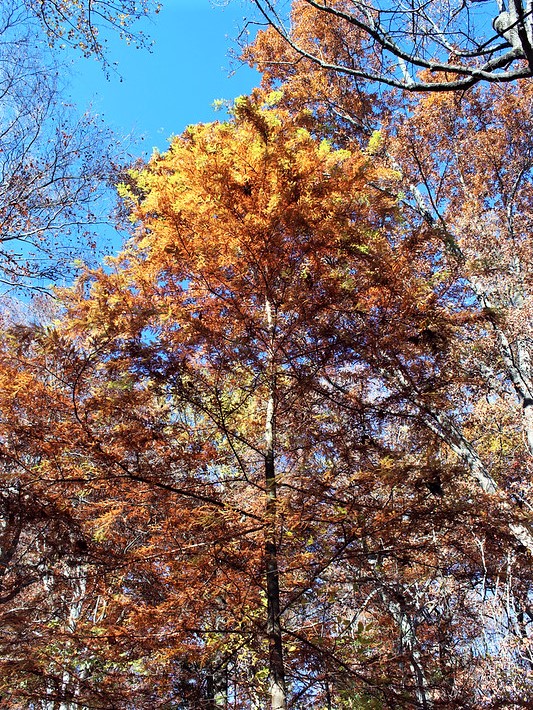
Why do we give away trees?
What does a Mid-Atlantic forest look and feel like? A cathedral of oak branches, soaring pillars of tulip poplar, and statuesque gray beeches. Beneath these large forest trees, the understory shrubs jockey for space and light. Fragrant spicebush, shade-tolerant pawpaw, and hardy staghorn sumac all stretch their leaves in the spring and light up the woods with fall color.
A century ago, however, the forest looked very different. Then, logging, railroads, and the Chestnut blight stripped the state of 60% of its forest, leaving a landscape so desolate that Joseph Rothrock, the state’s first forest commissioner, called it ‘The Pennsylvania Desert.’ The view haunted him, and he spent 20 years campaigning for forest protection.
Over the next 100 years, Penn’s Woods began to regrow. Progress was slow. Foresters hand-planted individual trees and protected them from deer and disease. Still, they worked carefully to bring back the trees. Now, 60% of Pennsylvania is forested once more.
But the work isn’t over. Climate change is already changing the fabric of our ecosystem. Trees that once thrived in Pennsylvania – like Eastern white pine, sugar maple, and northern red oak – may decrease in our area. Other more southern species are likely to rise – Eastern red cedar, sweetgum, and loblolly pine.
The trees we plant now will shelter our communities far into the future. We have focused on this for the Member Tree Giveaway in honor of Earth Day. The tree you receive is a species projected to survive well according to different climate models and will provide food or shelter for Pennsylvania wildlife.


